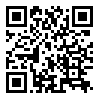Volume 1, Issue 1 (9-2019)
JAD 2019, 1(1): 34-40 |
Back to browse issues page
Download citation:
BibTeX | RIS | EndNote | Medlars | ProCite | Reference Manager | RefWorks
Send citation to:



BibTeX | RIS | EndNote | Medlars | ProCite | Reference Manager | RefWorks
Send citation to:
Hosseini-Chegeni A. Additional records of the tropical nest fly, Passeromyia heterochaeta Villeneuve, 1915 (Diptera: Muscidae) from western Iran supported by DNA barcoding. JAD 2019; 1 (1) :34-40
URL: http://jad.lu.ac.ir/article-1-36-en.html
URL: http://jad.lu.ac.ir/article-1-36-en.html
Department of Plant Protection, Pol-e Dokhtar Higher Education Center, Lorestan University, Pol-eDokhtar, Iran , hoseini.a@lu.ac.ir
Abstract: (9764 Views)
Passeromyia is a genus of flies associated with birds’ nests. Adults of Passeromyia heterochaeta were found within the houses near to domestic pigeon nests in Lorestan Province, western Iran. Flies were identified at the genus level by analysis of COI sequences of a representative specimen. Then, the specimens were identified according to morphological characteristics as P. heterochaeta and the sequence was submitted to the GenBank under this name. DNA barcoding approach can be used for approximate identification before using morphological keys.
Type of Study: Original Research Article |
Received: 2019/09/13 | Accepted: 2019/09/24 | Published: 2019/09/30
Received: 2019/09/13 | Accepted: 2019/09/24 | Published: 2019/09/30
References
1. Bezzi, M. (1922). On the dipterous genera Passeromyia and Ornithomusca, with notes and bibliography on the non-pupiparous Myiodaria parasitic on birds. Parasitology, 14 (1): 29–46. https://doi.org/10.1017/S0031182000009938 [DOI]
2. Bouckaert, R., Heled, J., Kühnert, D., Vaughan, T., Wu, C.-H., Xie, D., Suchard, M. A., Rambaut, A. and Drummond, A. J. (2014). BEAST 2: a software platform for Bayesian evolutionary analysis. PLOS Computational Biology, 10 (4): e1003537. https://doi.org/10.1371/journal.pcbi.1003537 [DOI]
3. Couri, M. S. and Carvalho, C. J. B. (2003). Systematic relations among Philornis Meinert, Passeromyia Rodhain & Villeneuve and allied genera (Diptera, Muscidae). Brazilian Journal of Biology, 63 (2): 223–232. http://dx.doi.org/10.1590/S1519-69842003000200007 [DOI]
4. Coutant, A. F. (1915). The habits, life history, and structure of a blood-sucking muscid larva (Protocalliphora azurea). The Journal of Parasitology, 1 (3): 135–150. http://dx.doi.org/ 10.2307/3271117 [DOI]
5. Doyle, J. J. and Doyle, J. L. (1987). A rapid DNA isolation procedure for small quantities of fresh leaf tissue. Phytochemical Bulletin, 19 (1): 11–15.
6. Edworthy, A. B. (2016). Avian hosts, prevalence and larval life history of the ectoparasitic fly Passeromyia longicornis (Diptera: Muscidae) in south-eastern Tasmania. Australian Journal of Zoology, 64 (2): 100–106. https://doi.org/10.1071/ZO15060 [DOI]
7. Gouy, M., Guindon, S. and Gascuel, O. (2010). SeaView version 4: a multiplatform graphical user interface for sequence alignment and phylogenetic tree building. Molecular Biology and Evolution, 27 (2): 221–224. https://doi.org/ 10.1093/molbev/msp259 [DOI]
8. Grzywacz, A., Khoobdel, M. and Akbarzadeh, K. (2014). First Palaearctic record of the bird parasite Passeromyia heterochaeta (Diptera: Muscidae) from the Iranian Persian Gulf Islands. Journal of Arthropod-Borne Diseases, 8 (2): 224–227.
9. Hicks, E. A. (1959). Check-list and bibliography on the occurrence of insects in birds’ nests. Ames, Iowa State College Press, Iowa, USA. 681 pp.
10. Jones, C. G. (2004). Conservation management of endangered birds, In: Sutherland, W. J., Newton, I. and Green, R. E. (Eds.), Bird ecology and conservation: A handbook of techniques. Techniques in Ecology and Conservation Series, Oxford University Press, Oxford, UK. pp. 269–301.
11. Khoobdel, M., Akbarzadeh, K. and Rafinejad, J. (2015). Fauna and relative frequency of synanthropic flies in the biggest Persian Gulf Island, Qeshm, Iran. Journal of Coastal Life Medicine, 3 (9): 733–736. http://dx.doi.org/10.12980/jclm.3.2015j5-116 [DOI]
12. Kumar, S., Stecher, G. and Tamura, K. (2016). MEGA7: Molecular Evolutionary Genetics Analysis Version 7.0 for Bigger Datasets. Molecular Biology and Evolution, 33 (7): 1870–1874. https://doi.org/10.1093/molbev/msw054 [DOI]
13. Kutty, S. N., Pont, A. C., Meier, R. and Pape, T. (2014). Complete tribal sampling reveals basal split in Muscidae (Diptera), confirms saprophagy as ancestral feeding mode, and reveals an evolutionary correlation between instar numbers and carnivory. Molecular Phylogenetics and Evolution, 78: 349–364. https://doi.org/10.1016/j.ympev.2014.05.027 [DOI]
14. Lindholm, A. K., Venter, G. J. and Ueckermann, E. A. (1998). Persistence of passerine ectoparasites on the diederik cuckoo Chrysococcyx caprius. Journal of Zoology, 244 (1): 145–153. https://doi.org/10.1111/j.1469-7998.1998.tb00016.x [DOI]
15. Little, S. E. (2008). Myiasis in wild birds, In: Atkinson, C. T., Thomas, N. J. and Hunter, D. B. (Eds.), Parasitic diseases of wild birds. Wiley-Blackwell, Ames, Iowa, USA. pp. 546–556.
16. Moon, R. D. (2019). Muscid flies (Muscidae), In: Mullen, G. and Durden, L. (Eds.), Medical and veterinary entomology. Academic Press, London, UK. pp. 345–368.
17. Nelson, L. and Grzywacz, A. (2017). Passeromyia indecora causes hematophagous myiasis in captive-bred domestic pigeon (Columba livia domestica) squabs. Memoirs of the Queensland Museum, 60: 172–173. https://dx.doi.org/10.17082/j.2204-1478.60.2017. 2017-03 [DOI]
18. Pont, A. C. (1974). A revision of the genus Passeromyia Rodhain & Villeneuve (Diptera: Muscidae). Bulletin of the British Museum (Natural History), 30 (7): 339–372. https://doi.org/10.5962/bhl.part.24943 [DOI]
19. Posada, D. and Crandall, K. A. (1998). Modeltest: testing the model of DNA substitution. Bioinformatics, 14 (9): 817–818. https://doi.org/10.1093/bioinformatics/14.9.817 [DOI]
20. Rodhain, J. (1914). Sur une larve de Muscinae vivant dans le nid de Passer griseus, au Congo. Revue Zoologique Africaine, 3: 213–217. [in French]
21. Simon, C., Frati, F., Beckenbach, A., Crespi, B., Liu, H. and Flook, P. (1994). Evolution, weighting, and phylogenetic utility of mitochondrial gene sequences and a compilation of conserved polymerase chain reaction primers. Annals of the Entomological Society of America, 87 (6): 651–701. https://doi.org/10.1093/aesa/87.6.651 [DOI]
22. Smith, A. B. (1994). Rooting molecular trees: problems and strategies. Biological Journal of the Linnean Society, 51 (3): 279–292. https://doi.org/10.1111/j.1095-8312.1994.tb00962.x [DOI]
23. Villeneuve, J. (1915). Diptères nouveaux d'Afrique. Bulletin de la Société entomologique de France, 20 (14): 225–227. [in French]
24. Wenzel, J. W. (2002). Phylogenetic analysis: the basic method, In: DeSalle, R., Giribet, G. and Wheeler, W. (Eds.), Techniques in molecular systematics and evolution. Springer, Basel, Switzerland. pp. 4–30.
25. Zumpt, F. (1965). Myiasis in man and animals in the Old World: A textbook for physicians, veterinarians, and zoologists. Butterworths, London, UK. 267 pp.
Send email to the article author
| Rights and permissions | |
 |
This work is licensed under a Creative Commons Attribution-NonCommercial 4.0 International License. |








